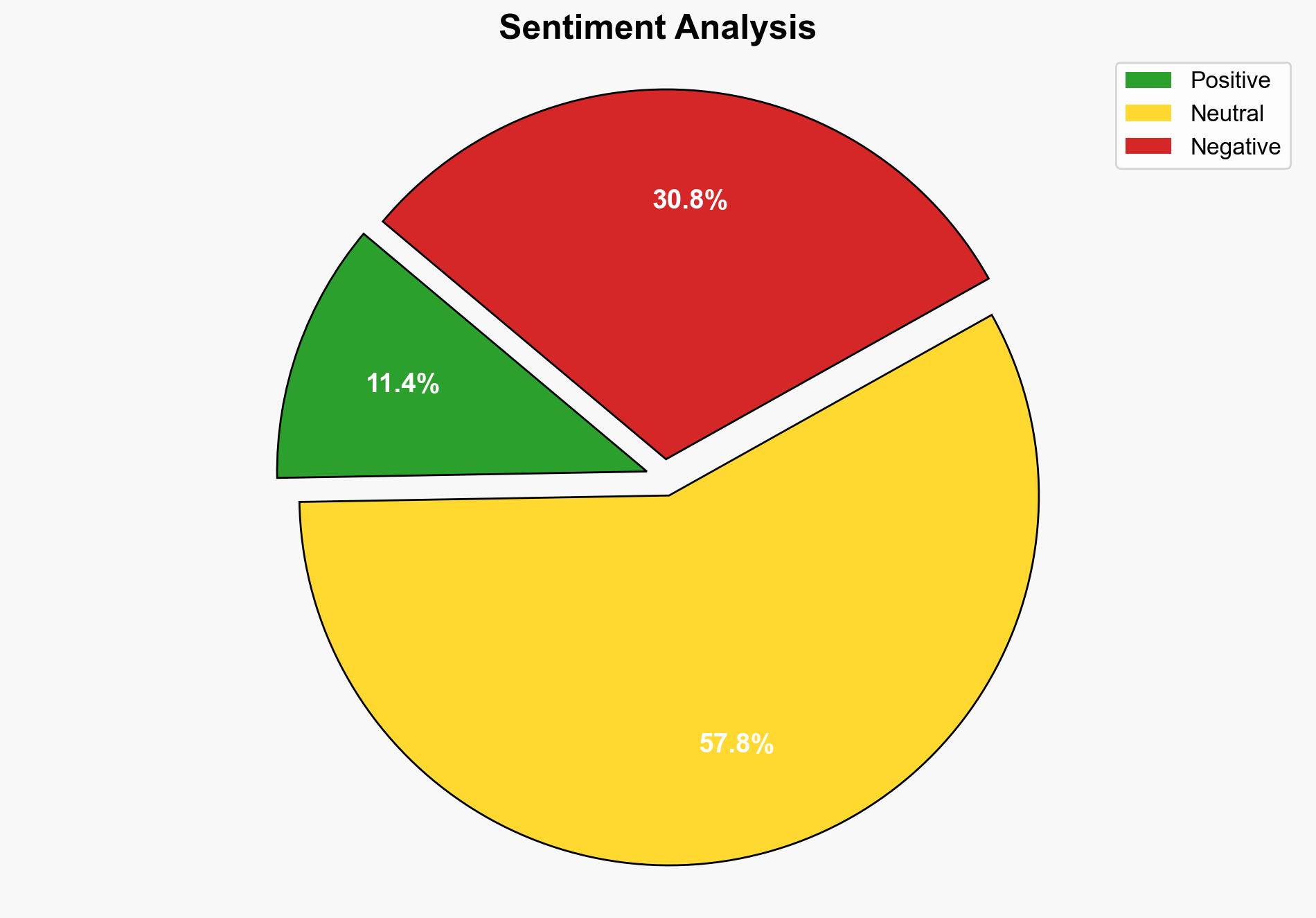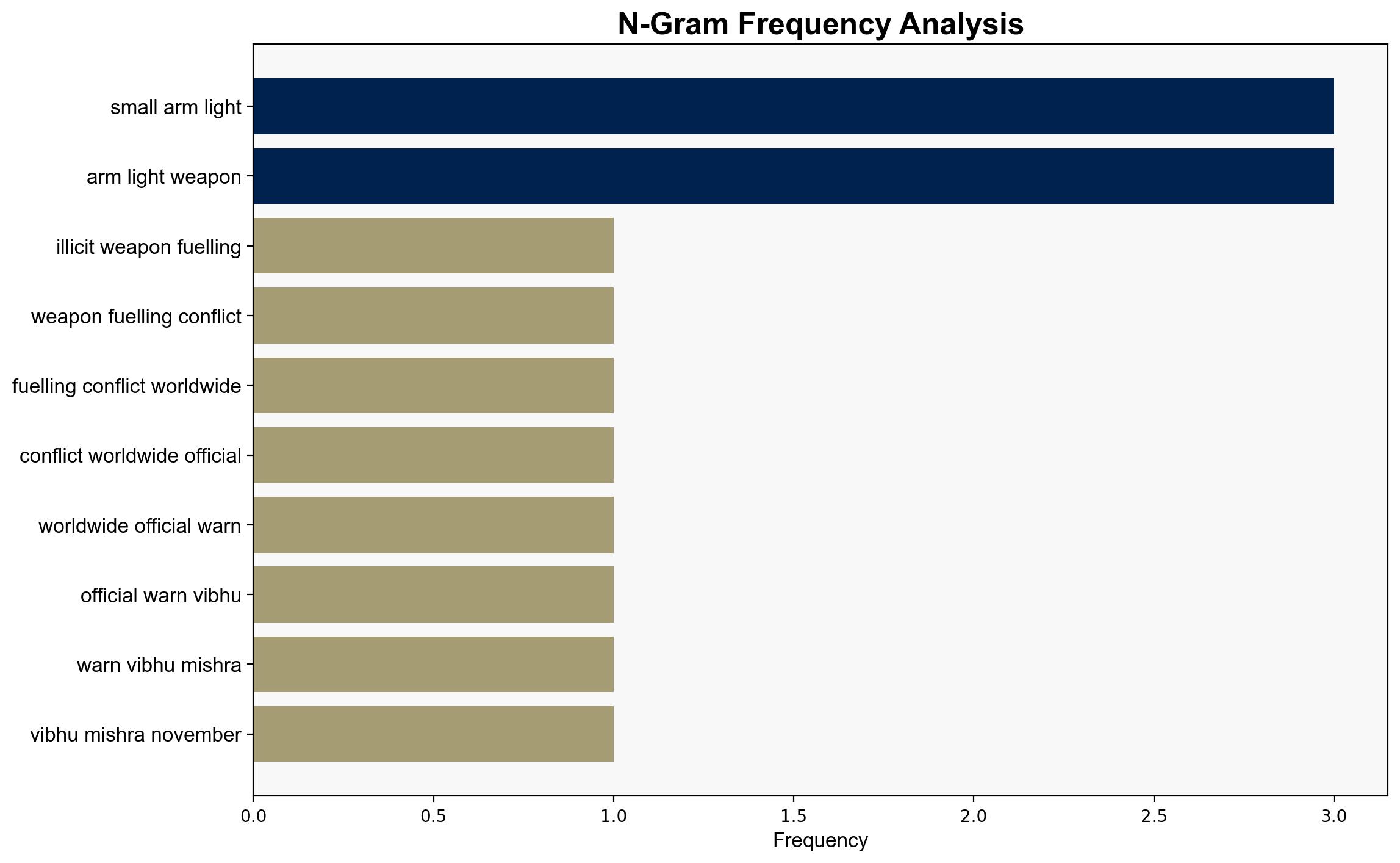Illicit weapons fuelling conflicts worldwide officials warn – Globalsecurity.org
Published on: 2025-11-11
AI-powered OSINT brief from verified open sources. Automated NLP signal extraction with human verification. See our Methodology and Why WorldWideWatchers.
Intelligence Report: Illicit weapons fuelling conflicts worldwide officials warn – Globalsecurity.org
1. BLUF (Bottom Line Up Front)
With a moderate confidence level, the most supported hypothesis is that the proliferation of illicit small arms and light weapons is primarily driven by weak international coordination and enforcement mechanisms, exacerbating conflicts and organized crime globally. Recommended actions include strengthening international cooperation, enhancing border controls, and integrating small arms control into peace operations.
2. Competing Hypotheses
Hypothesis 1: The primary driver of the proliferation of illicit weapons is the lack of effective international coordination and enforcement mechanisms, leading to increased conflicts and organized crime.
Hypothesis 2: The proliferation is mainly due to the increasing sophistication and accessibility of technology, such as 3D printing, which facilitates the production and distribution of untraceable weapons.
Hypothesis 1 is more likely given the emphasis on the need for coordinated global action and the role of international organizations like the UN and Interpol in addressing the issue. While technology plays a role, the structured international response and enforcement appear to be the critical missing elements.
3. Key Assumptions and Red Flags
Assumptions: Global actors are willing and able to cooperate on arms control; current data on illicit arms is accurate and comprehensive.
Red Flags: Potential underreporting or misreporting of arms data; resistance from states with vested interests in the arms trade; technological advancements outpacing regulatory frameworks.
4. Implications and Strategic Risks
The continued proliferation of illicit weapons poses significant risks, including escalating regional conflicts, destabilizing governments, and empowering non-state actors. This can lead to increased refugee flows, economic instability, and heightened global security threats. The potential for cyber and informational threats also increases as criminal networks leverage technology for arms distribution.
5. Recommendations and Outlook
- Enhance international cooperation through treaties and agreements focusing on arms control and enforcement.
- Invest in technology to improve tracking and tracing of weapons, including the development of databases and information-sharing platforms.
- Strengthen border controls and customs enforcement to prevent illegal arms trafficking.
- Best-case scenario: Effective international collaboration leads to a significant reduction in illicit arms trade and associated conflicts.
- Worst-case scenario: Continued proliferation exacerbates global conflicts, leading to widespread instability.
- Most-likely scenario: Incremental improvements in arms control with persistent challenges due to technological and political barriers.
6. Key Individuals and Entities
Vibhu Mishra, Adedeji Ebo, Ana Andriani, Mohame Ibn Chambas, Arnoux Descarde.
7. Thematic Tags
National Security Threats
Structured Analytic Techniques Applied
- Cognitive Bias Stress Test: Expose and correct potential biases in assessments through red-teaming and structured challenge.
- Bayesian Scenario Modeling: Use probabilistic forecasting for conflict trajectories or escalation likelihood.
- Network Influence Mapping: Map influence relationships to assess actor impact.
- Narrative Pattern Analysis: Deconstruct and track propaganda or influence narratives.
Explore more:
National Security Threats Briefs ·
Daily Summary ·
Methodology





